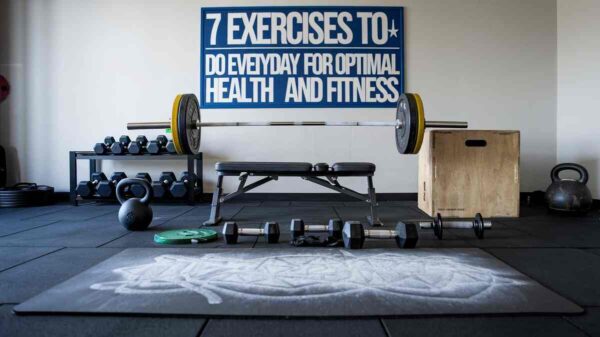When it comes to upper body strength, many beginners focus on the chest, shoulders, and back—but often overlook one essential muscle: the serratus anterior. This fan-shaped muscle wraps around the rib cage and plays a crucial role in maintaining shoulder stability, enhancing scapular mobility, and supporting core function.
Whether you’re a fitness newbie or looking to address poor posture and shoulder pain, incorporating serratus anterior exercises into your routine can significantly improve your physical foundation.
What Is the Serratus Anterior?
The serratus anterior originates at the first to the eighth or ninth ribs and inserts on the front of the scapula. It allows for:
- Upward rotation of the scapula
- Shoulder blade protraction (important in pushing motions)
- Improved posture and breathing support
Without proper function of this muscle, you’re more prone to shoulder injuries, rounded shoulders, and scapular winging.

Goal Setting for Fitness Beginners
Before jumping into workouts, start with realistic and achievable goals:
- Short-term goal: Strengthen serratus anterior for better shoulder health within 30 days.
- Long-term goal: Develop a full-body sustainable routine for mobility, strength, and posture.
- SMART strategy: Specific, Measurable, Achievable, Relevant, Time-bound.
Beginner-Friendly Serratus Anterior Exercises
Here are some low-impact, beginner-approved movements that focus on building strength in the serratus anterior:
1. Wall Slides
- How: Stand against a wall, arms at 90°, and slide your hands upward while keeping your elbows and wrists in contact.
- Benefits: Improves scapular upward rotation and posture.
2. Push-Up Plus
- How: Perform a regular push-up, then add a “plus” by pushing further at the top to round your upper back.
- Benefits: Excellent for scapular protraction and shoulder stability.
3. Scapular Push-Ups
- How: Keep arms straight, let shoulder blades sink in, then push them apart without bending your elbows.
- Benefits: Activates serratus anterior without stressing the chest.
4. Dumbbell Punch
- How: Hold light dumbbells, punch forward with control and full extension.
- Benefits: Engages the serratus and helps build range of motion.
5. Serratus Wall Slide (With Foam Roller)
- How: Place a foam roller on the wall at shoulder height and roll it upward using your forearms.
- Benefits: Stabilizes the scapula while improving motor control.
6. Band Pull Apart
- How: Using a resistance band, pull it apart at chest height while keeping your arms straight.
- Benefits: Strengthens upper back and serratus with scapular retraction.
7. Bear Crawl
- How: Crawl forward on hands and toes with knees hovering off the ground.
- Benefits: Activates core, serratus, and shoulder girdle.
8. Scapular Pull-Up
- How: Hang from a bar and perform a mini pull-up using only your shoulders.
- Benefits: Builds scapular strength and engages the serratus.
Weekly Beginner Workout Plan
| Day | Focus | Exercises |
|---|---|---|
| Mon | Activation + Core | Wall Slides, Push-Up Plus, Dumbbell Punch, Planks |
| Tue | Full Body Mobility + Rest | Yoga or walking + foam rolling |
| Wed | Strength + Scapular Movement | Scapular Push-Ups, Band Pull-Apart, Bear Crawl |
| Thu | Rest Day | Focus on hydration and stretching |
| Fri | Serratus Strength + Stability | Serratus Wall Slides, Scapular Pull-Ups, Incline Raise |
| Sat | Active Recovery | Swimming, cycling, or a light hike |
| Sun | Flexibility + Sleep Hygiene | Guided stretching + quality sleep |
Healthy Eating Tips to Support Muscle Activation
Proper nutrition is crucial for strengthening any muscle group, including the serratus anterior.
Nutrition Focus:
- Lean protein: Chicken, tofu, lentils
- Anti-inflammatory fats: Avocados, olive oil, nuts
- Hydrating foods: Cucumbers, watermelon, spinach
- Magnesium-rich foods: Dark chocolate, almonds, bananas
Also Read: Nutrition for Muscle Recovery Guide
Hydration & Sleep: The Foundation of Sustainable Fitness
Hydration Tips:
- Drink 8–10 glasses of water per day.
- Include electrolyte-rich fluids during intense workouts.
- Limit caffeine and alcohol, which can dehydrate you.
Sleep Hygiene:
- Aim for 7–9 hours of sleep.
- Create a consistent bedtime routine.
- Avoid screens 1 hour before sleep.
Recovery Tips for Shoulder and Upper Back Muscles
- Foam roll your upper back and lats.
- Stretch the chest to counterbalance tightness.
- Use a massage ball around the rib cage and shoulder blade area.
- Alternate intense days with less intense days to prevent burnout or injury.
Also Read: Post-Workout Recovery Techniques
How Sarah Fixed Her Shoulder Pain
Sarah, a 35-year-old graphic designer, dealt with years of shoulder tightness and winging scapula. She started incorporating serratus anterior exercises, such as push-ups and wall slides, three times a week, combined with improved hydration and sleep. Within 6 weeks, she noticed:
- Improved posture
- Less shoulder popping
- Stronger push-ups
- Better breathing during yoga
Build Your Fitness Foundation from the Inside Out
The serratus anterior muscle may be hidden, but its impact is enormous. By focusing on this often-neglected area with the right exercises, nutrition, and recovery, you’ll not only build better posture and strength—but you’ll create a more sustainable, injury-resistant health routine.
Frequently Asked Questions (FAQs)
What are the best serratus anterior exercises for beginners?
Wall slides, push-ups, scapular push-ups, and dumbbell punches are excellent starter exercises.
Can I train serratus anterior every day?
It’s best to alternate days, doing light activation daily and resistance training 2–3 times per week.
How long does it take to strengthen the serratus anterior?
With consistency, most people see improvements in posture and strength in 4–6 weeks.
Are serratus anterior exercises safe for shoulder injuries?
Yes, many of these are rehab-approved. However, always consult a physiotherapist if injured.
Does the serratus anterior affect breathing?
Absolutely. A strong serratus helps expand the rib cage, aiding in deeper breathing.

















